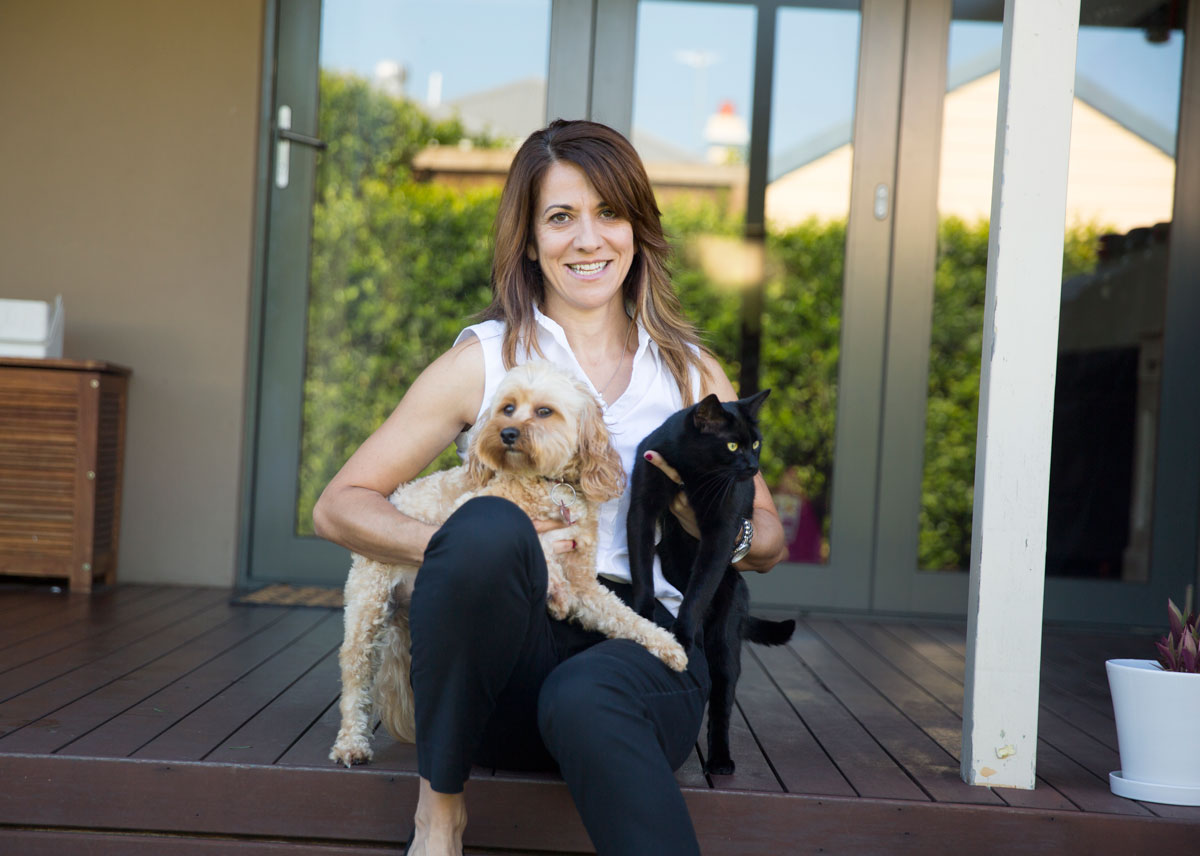Researcher Highlights
From hospital to paddock
Dr Yolanda Surjan
The innovative work of Dr Yolanda Surjan is bringing radiation therapy into veterinary clinics.

Radiation therapy is a vital branch of cancer medicine. It can be used as primary treatment, as adjuvant therapy or it can be integrated into palliative care. Exposure of cancerous cells to ionising radiation introduces DNA damage, which in turn triggers cell death.
Unsurprisingly therefore, radiation therapy services and specialists are typically found in hospitals and health service departments. Thanks to the innovative work of radiation therapist Dr Yolanda Surjan, it won’t be long before they’re a common feature of veterinary clinics too.
“We’ve identified a major gap in animal medicine – and we already have the solution.”
The state of the field
When Yolanda first heard that some veterinary clinics were using radiation therapy, she was keen to learn more.
“A colleague had mentioned that there was a local vet who had been using radiation therapy on horses. So I just picked up the phone and spoke to this vet, and he was very happy to have me down at his clinic .”
Those early discussions triggered the beginning of Yolanda’s PhD project.
Supervised by UON’s medical physicist, Associate Professor Helen Warren-Forward, and Director of Chris O’Brien Lifehouse Radiation Oncology and Medical Services, Associate Professor Christopher Milross, Yolanda’s project sought to clarify the current state of veterinary radiation therapy.
“I completed a retrospective study on what had been done in the past, and I slowly developed more contacts in the veterinary field. It was a bit of a brain strain getting all of that information together."
“I learned that skin cancer in horses, particularly in and around the eye, is the most common type of cancer where people were using radiation therapy.”
Although it is legal for vets to use this type of therapy, there are few protocols to follow and no rigid planning systems in place. Improper use of radiation in medicine is extremely risky - it can leave animals permanently disfigured.
“We do a pretty good job with primary skin cancer treatment in humans these days. So I knew that there was a translation possibility there.”
Accelerating research, accelerating translation
Having submitted her PhD in 2015, Yolanda applied for the Gladys M Brawn Fellowship in the hope that relief of her teaching load might help her progress with the translation of her research.
“You just have to apply for opportunities like these and then hope for the best. When I received the fellowship, it really changed things for me – now I can concentrate on my research and fast-track its implementation.”
Another highlight of Yolanda’s career, which has also enabled her to work on the translation of her PhD findings, has been her participation in CSIRO’s On Prime industry accelerator program.
“I received an email advertising an information session about the program and it outlined who it would all be targeted towards. So I went along and had a listen and it just seemed like a perfect opportunity.”
Yolanda set to work developing a multi-disciplinary team, which at present consists of a radiation oncologist, a medical physicist, a vet, a business specialist, a consumer and Yolanda herself.
“The ON program has helped me focus on how to translate my research idea into practise and how to commercialise it."
Indeed, in moving forward with her project, Yolanda has been in consultation with a diverse array of stakeholders, including equine and small animal vets, industry partners, insurance companies and animal owners.
Yolanda’s team were one of 10 teams selected to take part in the third stage of the national sci-tech accelerator – helping hone their business planning skills to pitch to potential partners and investors. It’s been a dizzying experience – and one that’s helped Yolanda move one-step closer to her goal.
An unconventional approach
Yolanda intends to establish a clinical trial investigating the application of radiation therapy on skin tumours in horses, cats and dogs. She also aims to instil adequate training of veterinary staff such that radiation therapy can be safely embedded into routine practise.
“We know there’s a need out there – there’s a customer base for sure."
“Imagine you brought in your sick cat to the vet and they said, ‘I've got a treatment that I can offer your pet that has been trialled and proven to work in humans...’ That’s not really the way things are typically done in research – it’s all gone full circle.”
Vast differences in the rigidity in regulation between animal and human health practises may have given way to some risky practises in the past, but this flexibility has also meant that Yolanda’s plans have the potential to come together much faster than if she were focused on a human cohort.
“The animal kingdom is very different – things are able to tick over very quickly."
“Everything is already lined up so beautifully in that the similar practises are already being used in humans – it’s almost too easy!”
Award winning ideas
This pioneering approach to research translation has won Yolanda UON’s inaugural Chancellor’s Award for Innovation. This award consists of $10,000 towards the development of her project, as well as ongoing support from UON’s Business Development Team.
“We already have four clinics on board – two of which I approached and two of which approached us once they had heard about our research."
“For me, it's about the research being translated, but just as long as it gets out there!”
The University of Newcastle acknowledges the traditional custodians of the lands within our footprint areas: Awabakal, Darkinjung, Biripai, Worimi, Wonnarua, and Eora Nations. We also pay respect to the wisdom of our Elders past and present.
